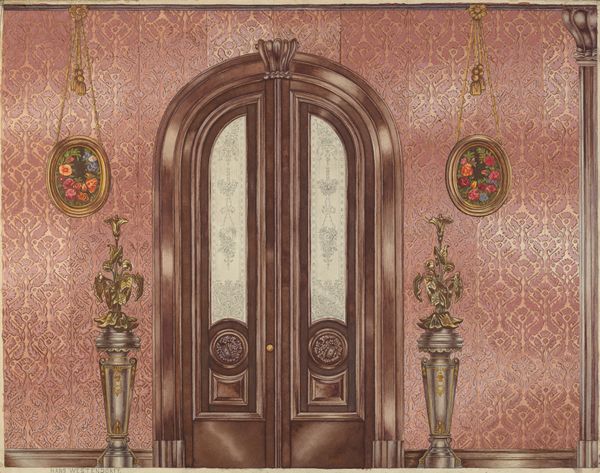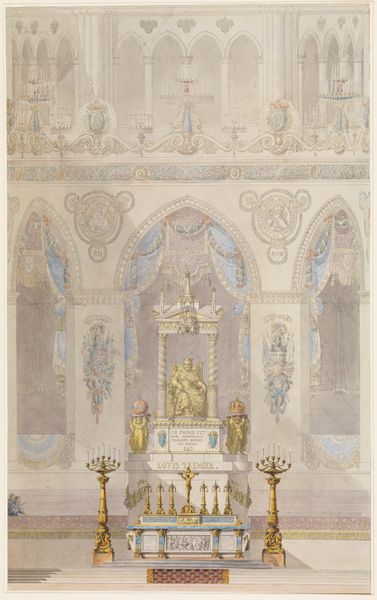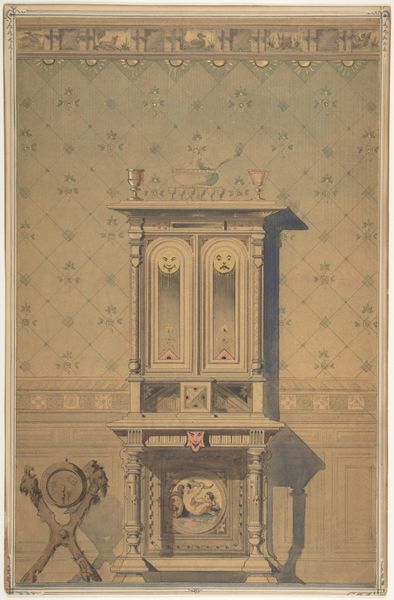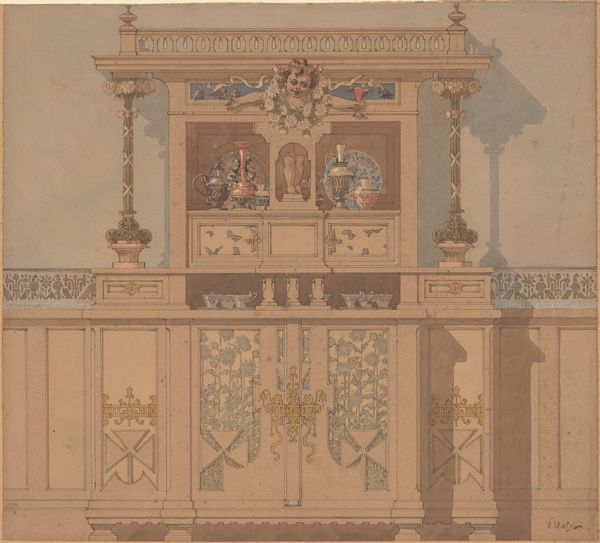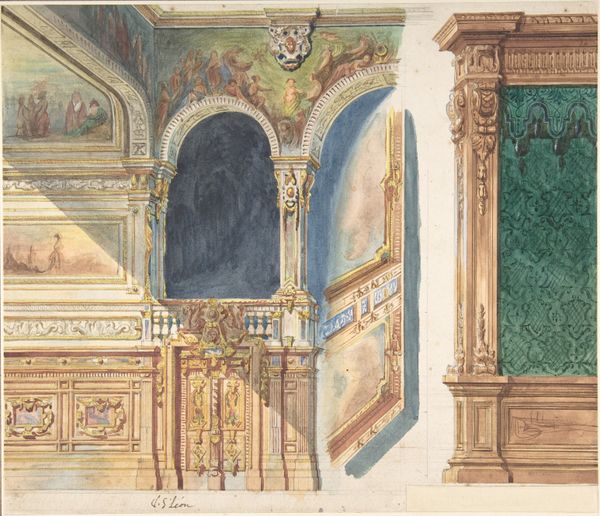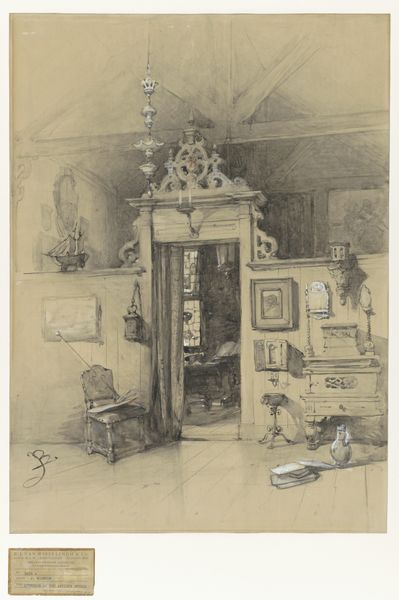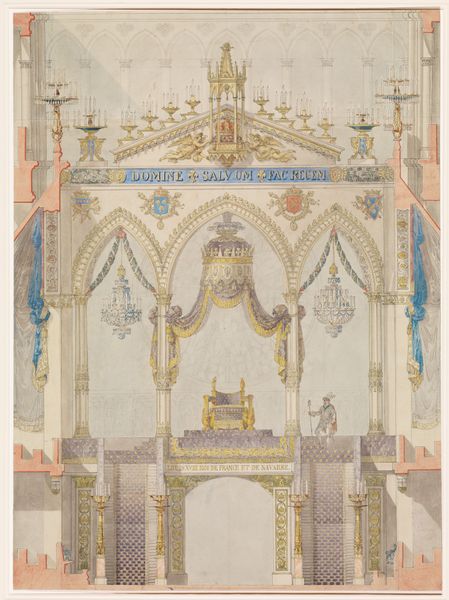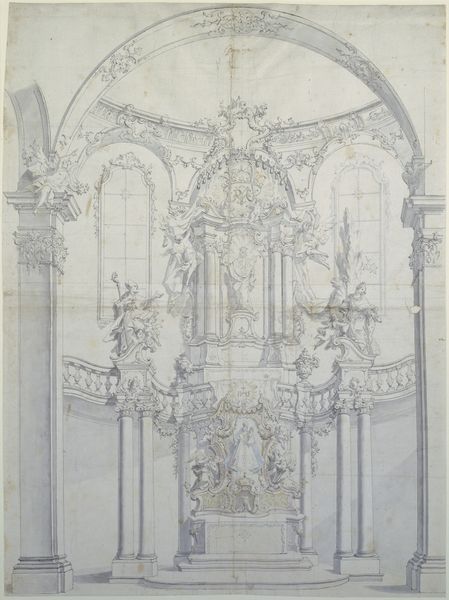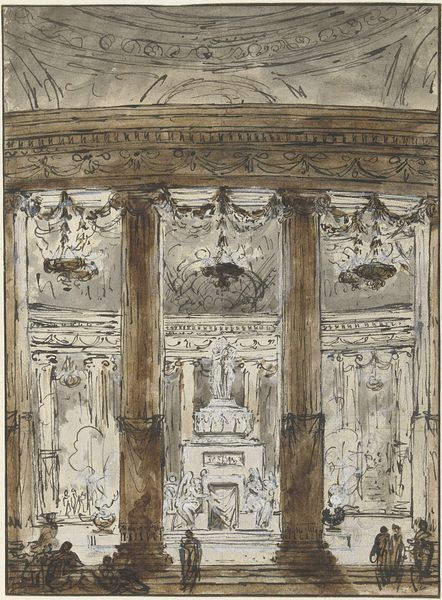
drawing, watercolor
#
drawing
#
watercolor
#
academic-art
#
watercolor
Dimensions: overall: 61.2 x 53.8 cm (24 1/8 x 21 3/16 in.)
Copyright: National Gallery of Art: CC0 1.0
Curator: Elisabeth Fulda created this work around 1938. It's titled "Portion of a Drawing Room" and is executed in watercolor and drawing media. It has a striking, almost stage-set quality to it, wouldn’t you say? Editor: Indeed, a proscenium of domesticity. My first impression is of constraint. The palette is muted, almost faded, and the composition feels overly symmetrical, as though everything is positioned for a formal portrait, hinting at hidden dynamics, or tensions held in place by etiquette and expectation. Curator: Fulda uses repetition effectively here. Observe the recurring floral motif in the wallpaper, mirrored, though subtly distorted, in the floral arrangements beneath glass domes on the mantelpiece. The wallpaper is Academic-Art, it must be said, but it works. How might we decode these echoing forms? Editor: The flowers, I think, carry a double valence. They are conventionally associated with beauty and domesticity, of course. However, contained within those glass domes, they take on a slightly morbid quality. Preserved, yet also somehow entombed, suggesting the fleeting nature of beauty and perhaps, the constraints placed upon women within the domestic sphere. Curator: An astute observation. Notice, too, how Fulda renders the reflection in the mirror above the fireplace. Instead of a clear depiction of the room, we see only the vague impression of a chandelier. The artwork's symmetry and restricted palette may deliberately draw viewers to certain visual elements, framing how the architectural is lived in. Editor: Precisely. And that chandelier becomes significant through its ethereal quality. Lighting, in symbolic terms, suggests enlightenment, but its clouded representation here perhaps indicates a kind of obscured or indirect knowledge, seen only through the lens of convention or social expectations, just barely suggested through visible form. The chairs on each side act almost like theater seating, suggesting spectators or those under watch within the composition of everyday life. Curator: A fascinating interpretation. Looking closely, Fulda's artistry lies in precisely this tension: between surface-level elegance and subtly unsettling symbolic depths. Editor: Exactly. The power of a work like this, for me, lies in how a seemingly straightforward depiction of domestic space becomes a portal into exploring wider themes of confinement, illusion, and the precarious beauty of appearances.
Comments
No comments
Be the first to comment and join the conversation on the ultimate creative platform.

